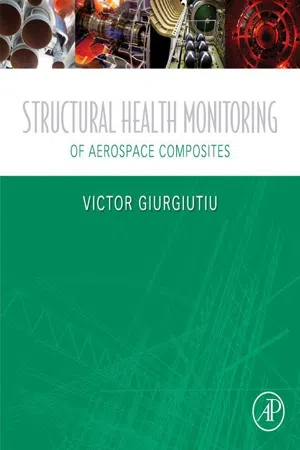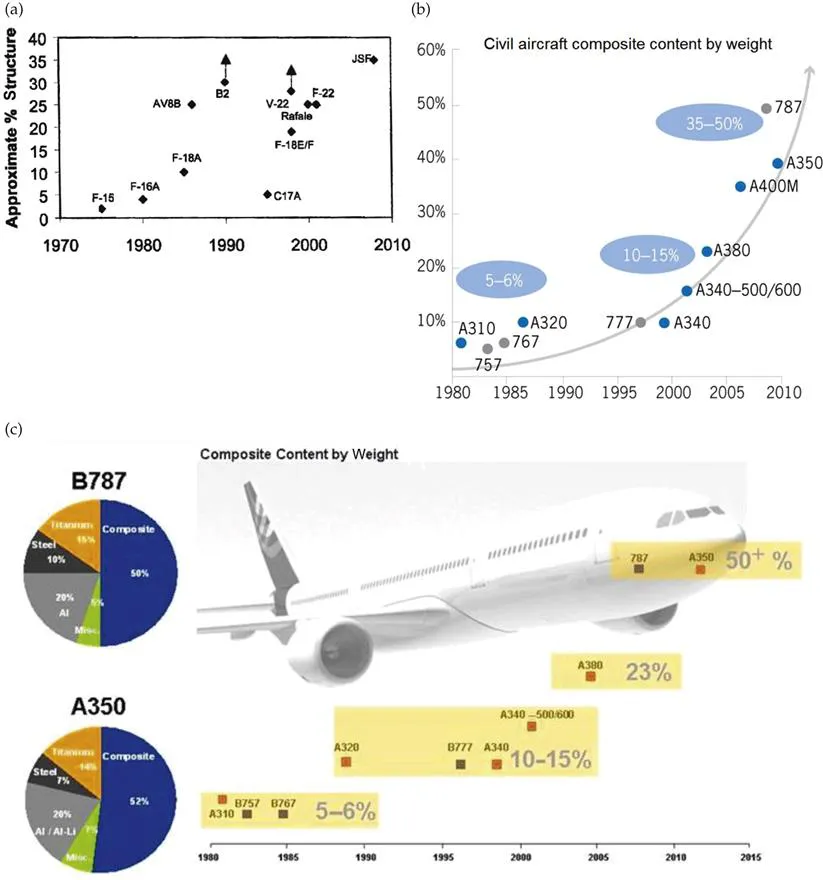
- 470 pages
- English
- ePUB (mobile friendly)
- Available on iOS & Android
Structural Health Monitoring of Aerospace Composites
About This Book
Structural Health Monitoring of Aerospace Composite Structures offers a comprehensive review of established and promising technologies under development in the emerging area of structural health monitoring (SHM) of aerospace composite structures.
Beginning with a description of the different types of composite damage, which differ fundamentally from the damage states encountered in metallic airframes, the book moves on to describe the SHM methods and sensors currently under consideration before considering application examples related to specific composites, SHM sensors, and detection methods. Expert author Victor Giurgiutiu closes with a valuable discussion of the advantages and limitations of various sensors and methods, helping you to make informed choices in your structure research and development.
- The first comprehensive review of one of the most ardent research areas in aerospace structures, providing breadth and detail to bring engineers and researchers up to speed on this rapidly developing field
- Covers the main classes of SHM sensors, including fiber optic sensors, piezoelectric wafer active sensors, electrical properties sensors and conventional resistance strain gauges, and considers their applications and limitation
- Includes details of active approaches, including acousto-ultrasonics, vibration, frequency transfer function, guided-wave tomography, phased arrays, and electrochemical impedance spectroscopy (ECIS), among other emerging methods
Frequently asked questions
Information
Introduction
Keywords
1.1 Preamble

1.2 Why Aerospace Composites?
1.3 What are Aerospace Composites?
1.3.1 Definition of Aerospace Composites
1.3.2 High-Performance Fibers for Aerospace Composites Applications

1.3.3 High-Performance Matrices for ...
Table of contents
- Cover image
- Title page
- Table of Contents
- Copyright
- Dedication
- Chapter 1. Introduction
- Chapter 2. Fundamentals of Aerospace Composite Materials
- Chapter 3. Vibration of Composite Structures
- Chapter 4. Guided Waves in Thin-Wall Composite Structures
- Chapter 5. Damage and Failure of Aerospace Composites
- Chapter 6. Piezoelectric Wafer Active Sensors
- Chapter 7. Fiber-Optic Sensors
- Chapter 8. Other Sensors for SHM of Aerospace Composites
- Chapter 9. Impact and Acoustic Emission Monitoring for Aerospace Composites SHM
- Chapter 10. SHM of Fatigue Degradation and Other In-Service Damage of Aerospace Composites
- Chapter 11. Summary and Conclusions
- Index